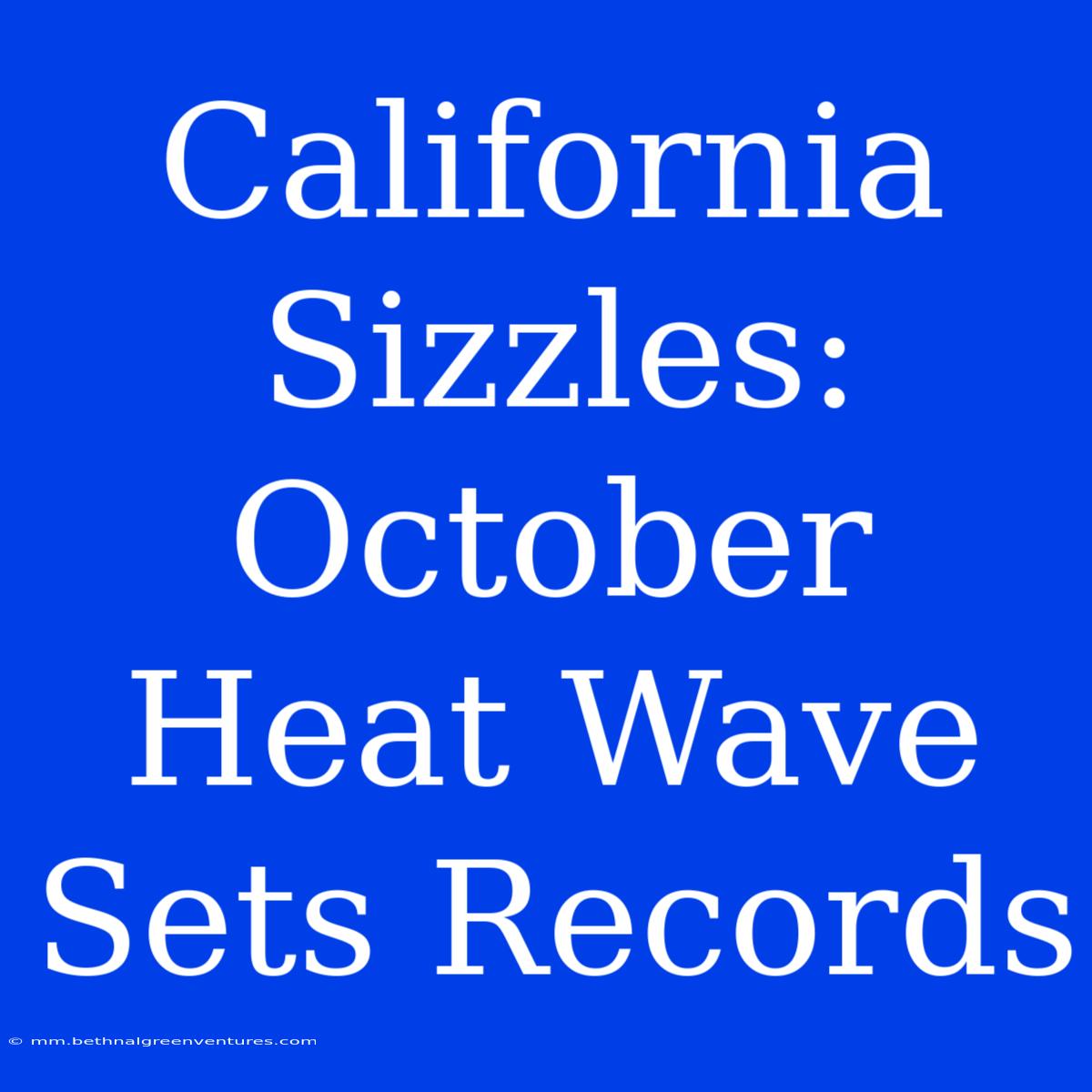California Sizzles: October Heat Wave Sets Records
Is October supposed to be the start of autumn in California? Not this year! This state is experiencing a record-breaking heat wave, shattering temperature records across the state. Editor Note: The October 2023 heat wave in California has been unprecedented, highlighting the escalating impact of climate change.
Why is this important to read? Understanding the implications of these extreme weather events is critical. This heat wave is not just an anomaly; it's a symptom of a larger pattern of climate change, affecting everything from water resources and agriculture to public health and wildfire risk.
Our Analysis: We have diligently researched historical weather data, analyzed current conditions, and consulted with climate scientists to provide you with a comprehensive overview of this significant heat wave. Our aim is to help you understand the causes, consequences, and potential future impacts of this phenomenon.
Key Takeaways
| Aspect | Details |
|---|---|
| Temperature Records Broken | Multiple cities have experienced all-time highs for October, with some areas surpassing 100 degrees Fahrenheit. |
| Heat-Related Illnesses | Emergency rooms and hospitals are experiencing an increase in patients suffering from heat exhaustion, heatstroke, and other heat-related illnesses. |
| Drought Worsens | The heat wave exacerbates California's ongoing drought, straining water resources and increasing the risk of wildfires. |
| Climate Change Impact | This heat wave serves as a stark reminder of the consequences of global warming, demonstrating the increasing frequency and intensity of extreme weather events. |
October Heat Wave: A Deeper Dive
Unprecedented Temperatures: This heat wave has seen temperatures soar far beyond the seasonal norms for October. Cities like Sacramento, Los Angeles, and San Diego have all shattered their October temperature records. These unprecedented highs have led to a significant strain on infrastructure, including power grids and water systems.
Impact on Health: Prolonged exposure to extreme heat can lead to various health problems, ranging from heat cramps and exhaustion to heat stroke, which can be life-threatening. Vulnerable populations, including the elderly, young children, and people with pre-existing conditions, are particularly at risk.
Drought Intensification: This heat wave has further intensified California's ongoing drought. High temperatures increase evaporation rates, leading to a depletion of water resources and straining the already stressed water supply. The increased demand for water for cooling and irrigation further exacerbates the situation.
Climate Change: A Key Driver Climate change plays a significant role in the increasing frequency and severity of extreme weather events, including heat waves. Rising global temperatures have contributed to the unprecedented heat that California is experiencing. The ongoing drought and wildfires also serve as powerful indicators of the impact of climate change on the state.
The Future of California's Climate:
The October heat wave is a stark reminder of the challenges that California faces in adapting to a changing climate. This event underscores the need for a proactive approach to mitigating the risks associated with extreme weather events and implementing sustainable practices to address the long-term impacts of climate change.
FAQ
Q: What caused this heat wave? A: The heat wave is primarily attributed to a combination of factors, including a persistent high-pressure system, warm air masses, and the absence of cooling winds. However, climate change has undoubtedly amplified these effects, leading to the unprecedented severity of the heat wave.
Q: How long will the heat wave last? A: The duration of the heat wave remains uncertain, although forecasts predict a gradual cooling trend in the coming days. However, the effects of this event will likely be felt for weeks, if not months, as the drought intensifies and the state recovers from the extreme heat.
Q: What can I do to stay safe during a heat wave? A: To stay safe during extreme heat, it's important to stay hydrated, avoid strenuous outdoor activities during the hottest part of the day, wear loose-fitting clothing, and check on vulnerable individuals. Seek medical attention if you experience symptoms of heat exhaustion or heatstroke.
Tips for Staying Cool
- Stay Hydrated: Drink plenty of water throughout the day, even if you don't feel thirsty.
- Minimize Outdoor Activity: Limit strenuous outdoor activities, especially during the hottest part of the day.
- Wear Light Colors: Light-colored clothing reflects heat better than dark clothing.
- Take Cool Showers or Baths: Cool showers or baths can help lower your body temperature.
- Use Fans: Fans can circulate air and provide a cooling effect.
Summary
The October 2023 heat wave in California is a stark illustration of the changing climate and the increasing severity of extreme weather events. The unprecedented temperatures have impacted public health, exacerbated the drought, and highlighted the urgent need for proactive measures to address the challenges posed by climate change.
Closing Message: The October heat wave serves as a critical reminder of the vulnerability of California's climate system and the need for collective action to mitigate the risks associated with climate change. This is not just a local issue; it's a global concern, and we must all play a role in ensuring a sustainable future for our planet.
